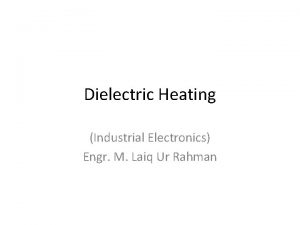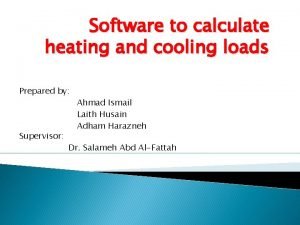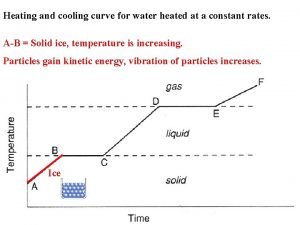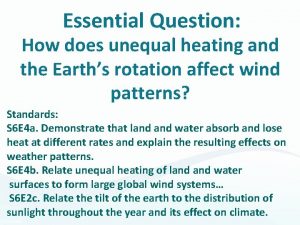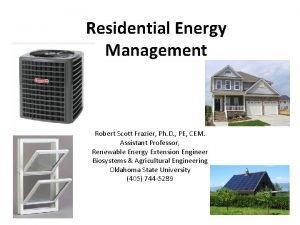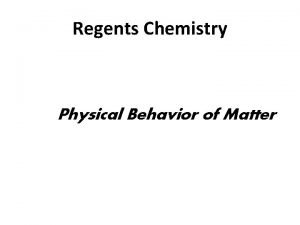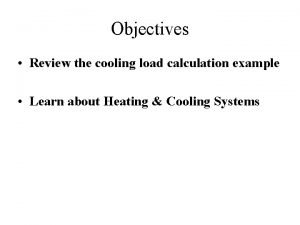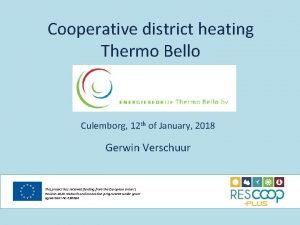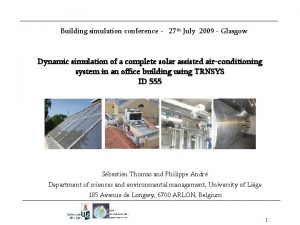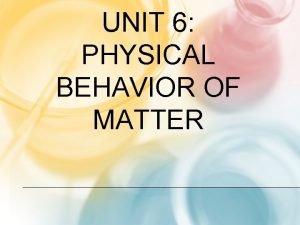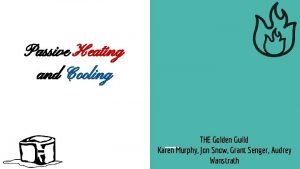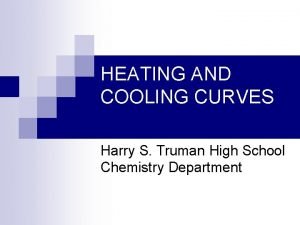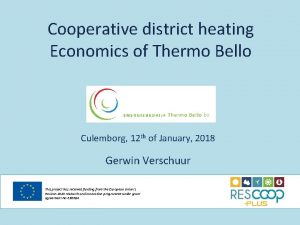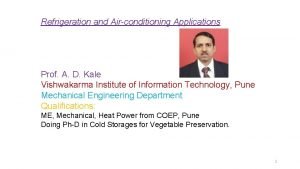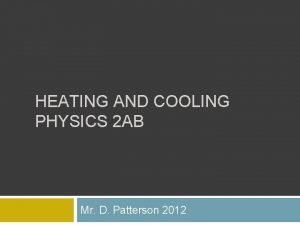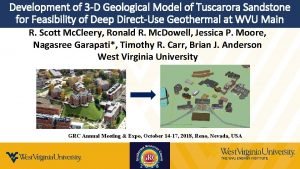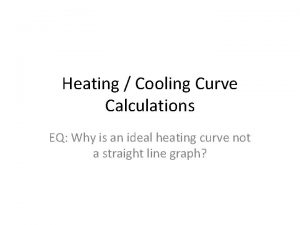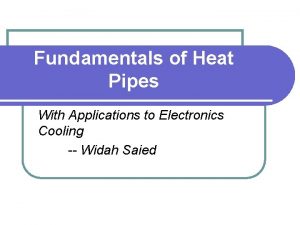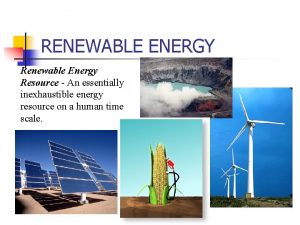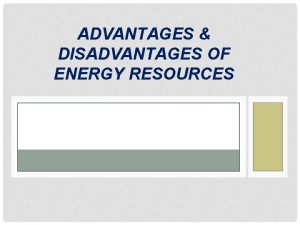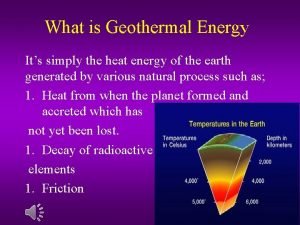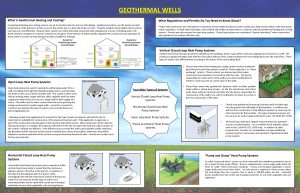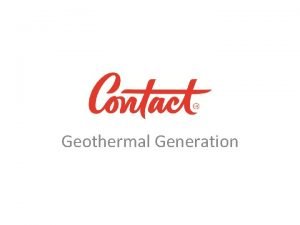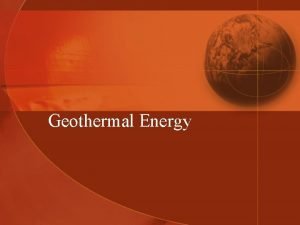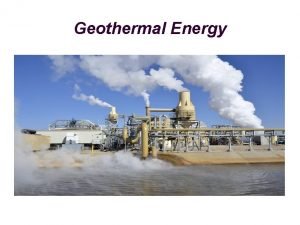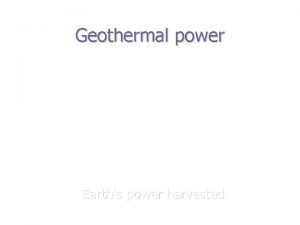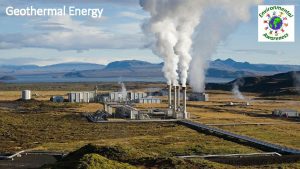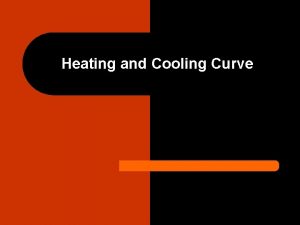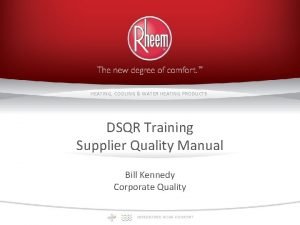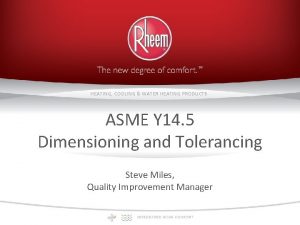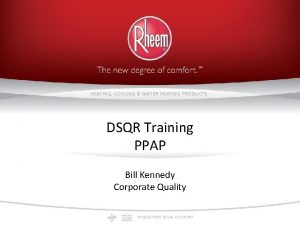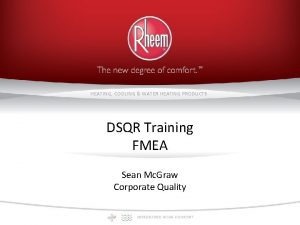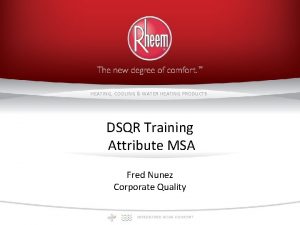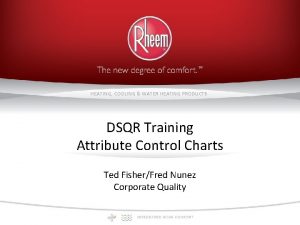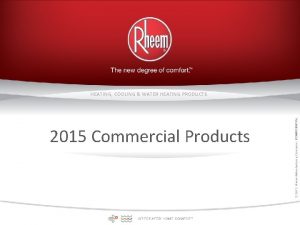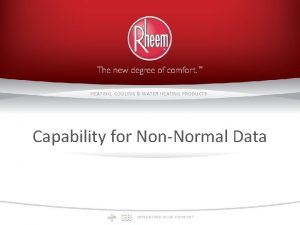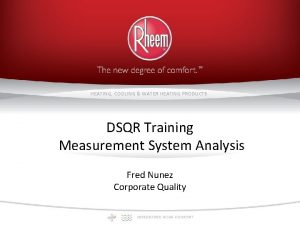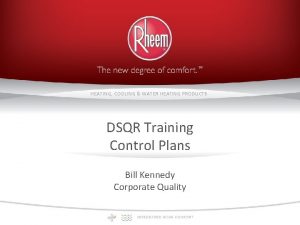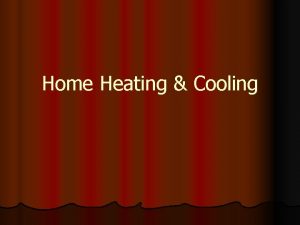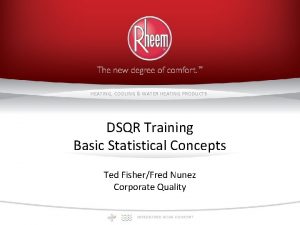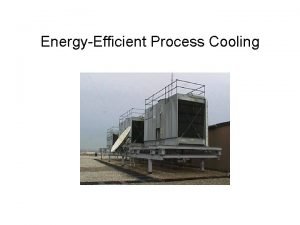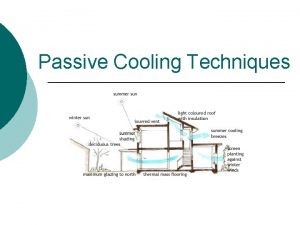Geothermal Heating and Cooling Applications Rachel Kerekgyarto Geothermal

























- Slides: 25

Geothermal Heating and Cooling Applications Rachel Kerekgyarto

Geothermal Energy l Thermal energy stored in the Earth l Sources – – l Solar energy absorbed in Earth’s crust Radioactive decay at the core of the Earth Clean, sustainable energy source

Geothermal Resources l Three Classifications – Low Temperature: 40 o. F - 100 o. F l l – Moderate Temperature: 100 o. F - 300 o. F l – Direct-Use Heating Applications High Temperature: > 300 o. F l l Widespread Heat Pump Applications Electricity Generation Focus: Low Temperature

Geothermal Heating Principles l l Conventional heating systems (furnaces or boilers) create heat Heat pumps transfer existing heat from one area to another Ground temperatures are more stable than air temperatures…Smaller Lift Ground serves as a… – – Heat source in the winter Heat sink in the summer

U. S. Ground Temperatures Range: 37 o. F - 77 o. F

Changes in Ground Temperature l Seasonal ground temperature change decreases with depth l Depths greater then 20 ft: constant ground temperature

Geothermal Heat Pump System l Three Major Components – Ground Loop Piping System l – Heat Pump l – Circulates a fluid & serves as an underground heat exchanger Uses refrigerant loop to convert heat into useable heat Ductwork l Distributes heat throughout building

Types of Ground Loops l Open Loops – – l Open to environment Circulate groundwater (or surface water) to the heat pump, then discharge the water Closed Loops – – Sealed loop of pipe in the ground or a body of water Continuously circulates a fluid to the heat pump

Open Loops l Well Requirements – 1. 5 – 3. 0 gpm per ton of heating capacity l Water Quality Concerns – l Hardness, Acidity, Iron Water Discharge – – – Surface water Drainage ditch Recharge groundwater

Closed Loops - Horizontal l Shallow Trenches – l 4 – 6 ft deep Pipe Length – 500 ft of pipe per ton of heat pump capacity l Land Area – 750 to 1500 ft 2 per ton

Closed Loops - Vertical l Drilled Boreholes – l Pipe Length – l Depths up to 250 ft 300 ft of pipe per ton Land Area – 100 – 200 ft 2 per ton

Closed Loops - Slinky l l l Greater heat transfer in a given volume of soil Compact or Extended Coils Horizontal Configuration – Uses 1/3 trench length of a 2 -pipe loop l Vertical configuration – Depths of 20 – 30 ft

Closed Loops – Lake l Water Surface – l ¼ - ½ acre Water Depth – Minimum 8 ft

Closed Loops l Piping – – – HDPE Plastic Pipe Joined by thermal fusion Minimum 50 yr warranty

Closed Loops l Ground Loop Fluids – – Water: warm climates only Antifreeze Solution l Salts – l Glycols – l Non-corrosive, fair heat transfer, BUT toxic & viscous Alcohols – l Non-toxic, good heat transfer, BUT corrosive Non-corrosive, fair heat transfer, BUT toxic & flammable Potassium Acetate – Non-toxic, non-corrosive, more efficient

Closed Loops - Geobag l LDPE Plastic Bag – l 60 ml thick Horizontal Configuration – Uses 1/5 trench length of a 2 -pipe loop l Undergoing Field Development

Closed Loop – Direct Expansion l Direct Refrigerant Ground Loop – – l Higher Efficiency Copper Piping Undergoing Field Development

The Heat Pump l l Refrigeration device that works backwards Heating Schematic

The Heat Pump l Cooling Schematic l Domestic Hot Water Heating

Refrigerant l l R-22, an HCFC ODP = 0. 05 (Ozone Depletion Potential) – l l 5% of CFC-11&12 ODP Production Phase Out 2030 Alternatives – Blends of HFC’s – zero ODP

System Cost Comparison

Heat Pump Efficiency l Coefficient of Performance: 3. 0 - 4. 0 – Produce 3 to 4 times the energy used l 40% to 60% Energy Savings l 2 – 8 year Payback on Initial Cost Utility Rebates l – GHP’s reduce peak load

Operating Cost Comparison

Eliminating Emissions l Galt House East Hotel – – Louisville, Kentucky Open Groundwater Loop (58 o. F) Annual Energy Savings: 5. 6 mil k. Wh Annual Emission Reductions l l l 1. 8 mil lb of CO 2 44, 000 lb SOX 33, 000 lb NOX

Conclusion l Estimated 400, 000 GHP Systems in U. S. – – l Increasing Popularity Residential & Commercial Installations Advantages – – – High Efficiency Reduce Emissions Renewable Resource Economical Constant Availability
 Dielectric heating formula
Dielectric heating formula Liz owns stock in nar
Liz owns stock in nar Cooling load software
Cooling load software Latent heat of fusion
Latent heat of fusion Unequal heating
Unequal heating Frazier heating and cooling
Frazier heating and cooling Kelvin to c
Kelvin to c Cooling load calculation example
Cooling load calculation example Thermo bello
Thermo bello H&c heating and cooling
H&c heating and cooling Physical behavior of matter heating and cooling curves
Physical behavior of matter heating and cooling curves Karen heating and cooling
Karen heating and cooling Heating curve
Heating curve Thermo bello
Thermo bello Kale heating and cooling
Kale heating and cooling Heating cooling curve
Heating cooling curve Sieb heating and cooling
Sieb heating and cooling Dsqr training
Dsqr training Southampton district energy scheme
Southampton district energy scheme Geothermal heating tuscarora
Geothermal heating tuscarora Heating cooling curve equations
Heating cooling curve equations Types of heat pipes
Types of heat pipes Geothermal energy advantages
Geothermal energy advantages Inexhaustible energy resource
Inexhaustible energy resource Natural gas advantages
Natural gas advantages The rarest and oldest type of geothermal power plant
The rarest and oldest type of geothermal power plant
